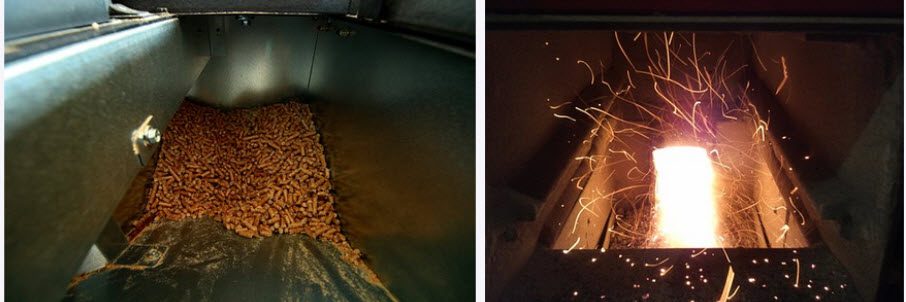Aviation biofuel, including bio-jet-fuel, is considered a key element to reduce the carbon footprint of the aviation industry.
The first test flight with biofuel was successfully carried out in 2008, although it used biofuel blended with petroleum fuel rather than pure biofuel. By 2011, blended fuels containing up to 50% biofuel was being used for certain commercial flights.
By 2019, only 0.1% of the consumed aviation fuel was biofuel. The International Air Transport Association (IATA) supports the use of aviation biofuel, and in 2019, they announced that their goal for 2025 was for 2% of the consumed aviation fuel to be biofuel.
It should be noted that small piston engines can be modified to burn ethanol as a fuel, as they do not require jet fuel. Ethanol can be derived from sustainable sources.

Drop-in aviation biofuel
Understanding jet fuel
Jet fuel is a mixture of a large number of different hydrocarbons, with different molecular weights or carbon numbers. Broadly speaking, they have been classified as either koresene-type or naphtha-type. Examples of kerosene-type jet fuels are Jet A, Jet A-1, JP-5, and JP-8. Among the naphtha-type jet fuels, we find Jet B and JP-4. (Napthta-type jet fuels are also known as wide-cut jet fuel.)
What is drop-in biofuel?
A drop-in biofuel is a biofuel that is interchangeable with non-bio fuel. If an engine is developed for fossil-derived diesel, drop-in biodiesel can be used in the engine without requiring any modifications of the engine or engine system. If an aircraft is developed for fossil-derived jet fuel, drop-in bio jetfuel can be used without first changing the aircraft, and so on.
Drop-in jet fuel
ASTM has approved two routes for the production of drop-in bio jet fuel: HEFA-SPK and FT-SPK.
ASTM has also announced that it is safe to blend in 50% SPK into regular fossil-derived jet fuel. So far, blending in synthetic paraffinic kerosene (SPK) in higher concentrations is at the testing stage and not approved.
Hydroprocessed Esters and Fatty Acids Synthetic Parafinic Kerosine (HEFA-SPK)
Through a special treatment, vegetable oil from sources such as algae, japtropha and camelina can be converted into Hydroprocessed Esters and Fatty Acids Synthetic Parafinic Kerosine (HEFA-SPK). The process involves the deoxygenation and hydroprocessing of the feestock fatty acids.
As of 2021, it is considered the leading candidate for replacing fossil-derived jet fuel.
Examples of companies working with the research and development of HEFA-SPK are Honeywell/UOP, Solazyme, Sapphire Energy, Aquaflow Bionomic, and Imperium Renewables. Among the major investors into the research we find Honeywell/UOP, General Electric, Boeing, Continental Airlines, Japan Airlines, and Air New Zealand.
Fischer-Tropsch Synthetic Paraffinic Kerosene (FT-SPK)
This type of fuel is created from solid biomass. The process involves either using pyrolysis to to produce pyrolysis oil, or using gasifaction to produce a syngas which is then processed into FT Synthetic Parafinnic Kerosene.
Alcohol-to-jet Synthetic Paraffinic Kerosene (ATJ-SPK)
Alcohol-to-jet SPK is created by turning an alcohol – such as ethanol or butanol – into jet fuel. The alcohol is de-oxygenated to produce the synthetic paraffinic kerosene.
A few notable milestones
First blended flight
The first test flight with biofuel was successfully carried out in 2008, although it used biofuel blended with petroleum fuel rather than pure biofuel.
First commercial airline flight
Virgin Altantic flew the first commercial airline flight powered partly by biofuel.
IATA commits
In 2009, the IATA committed to havel carbon emissions by 2050.
New regulations
In 2011, the Specifications for Aviation Turbine Fuel Containing Synthesized Hydrocarbons (ASTM D7566) was revised to permitt commercial airlines to use fuel blends in which biofuel had been added to conventional fossil-derived jet fuel, up to a maximum of 50% biofuel in the final blend.
Since then, several annexes to D7566 has been published, with details regarding specific aviation biofuels, such as Fischer-Tropsch Synthetic Paraffinic Kerosene (FT-SPK, 2009), Hydroprocessed Esters and Fatty Acids Synthetic Paraffinic Kerosene (HEFA-SPK, 2011), Hydroprocessed Fermented Sugars to Synthetic Isoparaffins (HFS-SIP, 2014), Fischer-Tropsch Synthetic Paraffinic Kerosene with Aromatics (FT-SPK/A, 2015), Alcohol to Jet Synthetic Paraffinic Kerosene (ATJ-SPK, 2016), and Catalytic Hydrothermolysis Synthesized Kerosene (CH-SK, or CHJ; 2020).
Virgin Australia
By 2019, Virgin Australia had fueled more than 700 flights and flown more than one million kilometres (both domestic and international) using Gevo´s alcohol-to-jet fuel.
International Airlines Group
By 2020, the International Airlines Group had invested 400 million USD to convert waste into aviation biofuel with Velocys.

